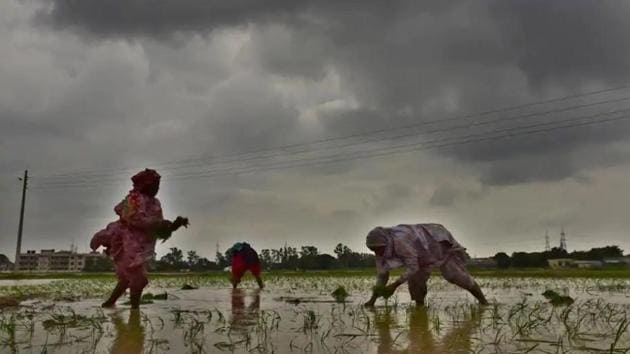Food production needs to be more eco-friendly
According to Lancet study, food system changes land use, leading to climate change, water depletion
If the planet has to be saved from catastrophic climate change, by 2040, the world’s food production systems should absorb more carbon than they emit; in other words, act as a carbon sink, a global report has found.

The EAT- Lancet Commission on Food, Planet and Health, comprising a team of over 37 experts from 16 countries, including India, has cautioned that it would be impossible to contain global warming unless food production systems, of which agriculture is a vital component, are not overhauled.
Under the 2015 Paris Agreement, 195 nations agreed to keep average global warming to well below two degree Celsius compared to the global temperatures in the pre-industrial era.
There is already a rise of one degree in global temperatures since 1900.
“In this geological epoch, the Anthropocene, pace and scale of local environmental effects have grown exponentially since the mid-1950s. Humans have become dominating drivers of change, and food production is the largest source of environmental degradation and has the greatest effect on the earth system,” the report, published in the Lancet Journal on Thursday, found.
Food production changes land-use, causes climate change, biodiversity loss, freshwater depletion and involves the use of chemical fertilizers.
The commission, which focused on two endpoints of the global food system — final consumption (healthy diets) and sustainable food production — also offered solutions to stave off negative impact.
“Sustainable food production for about 10 billion people should use no additional land, safeguard existing biodiversity, reduce consumptive water use and manage water responsibly, substantially reduce nitrogen and phosphorus pollution, produce zero carbon dioxide emissions, and cause no further increase in methane and nitrous oxide emissions,” the report said.
The commission attempted to estimate a maximum allowable carbon budget from food production.
For instance, greenhouse gas (GHG) emissions of methane and nitrous oxide will have to remain between 4.7 to 5.4 gigatonne in 2050. In 2010, these emissions were already estimated to be about 5.2 gigatonnes.
Phosphorus use must be reduced from current usage of 17.9 teragram to between 6-16 teragram. Biodiversity loss must be decelerated from 100 to between 1 to 80 extinctions per million species annually, no further conversion of land for agriculture should be allowed.
Although total emissions from food production have been stable since 1990, the total estimate of all GHG emissions from food production is 8·5–13·7 gigatones of carbon dioxide equivalent per year.
The report terms these targets “planetary boundaries” (global biophysical limits that humanity should operate within to ensure a stable environment) within which agricultural production must remain to prevent harmful impact of climate change like global warming.
Apart from halving the current rate of food losses and wastage, the commission also recommended efficiency in agricultural land use with a focus on closing yield gaps by at least 75% (yield gap is defined as the difference between potential yield and actual farm yield under the same environment); balancing nitrogen and phosphorus fertilizer application between regions; improved water management; and saving biodiversity in agricultural plots.
“Agriculture is in fact an opportunity to mitigate as well as adapt to climate change. Policy makers have to realise that making these changes in the farming system is not optional any more. I hope the Lancet Commission reaches out to policy makers,” said Kavitha Kuruganti, researcher and activist, Alliance for Sustainable & Holistic Agriculture.
In India, two states have taken the lead on demonstrating how natural farming can be water efficient, help conserve biodiversity and eliminate phosphorus and nitrogenous fertilisers.
In 2003, Sikkim stopped imports of chemical fertilizers, and since then, the cultivatable land there is used for organic or natural farming. Sikkim won the Future Policy Award 2018 of the Food and Agricultural Organisation, beating 51 nominated policies from 25 countries, for its sustainable farming practices.
Andhra Pradesh government last year launched a policy to transition 6 million farms and farmers cultivating 8 million hectares of land from conventional synthetic chemical agriculture to Zero-Budget Natural Farming by 2024.
Get Current Updates on India News, Lok Sabha Election 2024 live, Infosys Q4 Results Live, Elections 2024, Election 2024 Date along with Latest News and Top Headlines from India and around the world.



